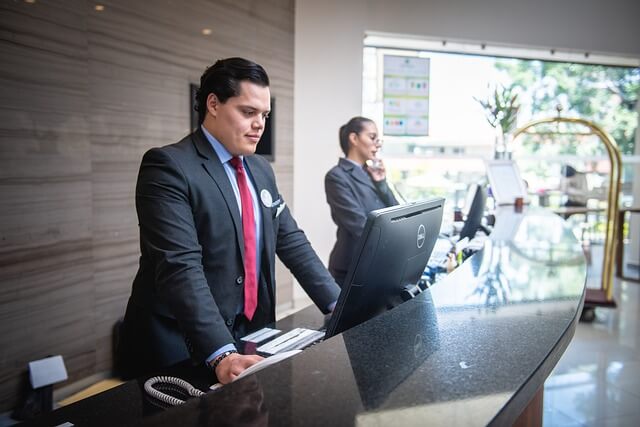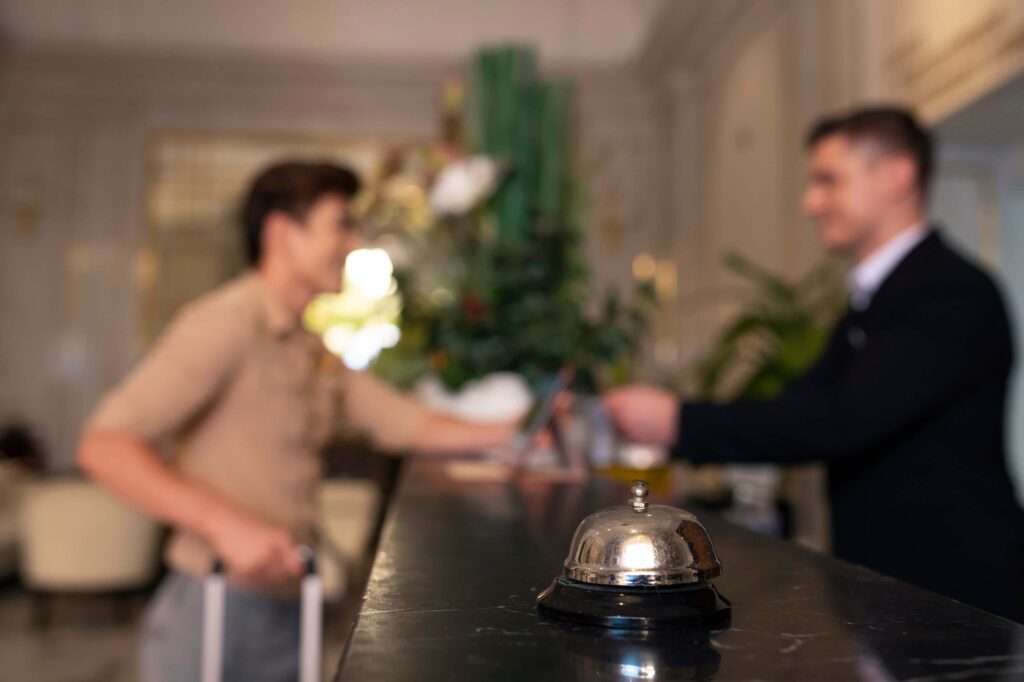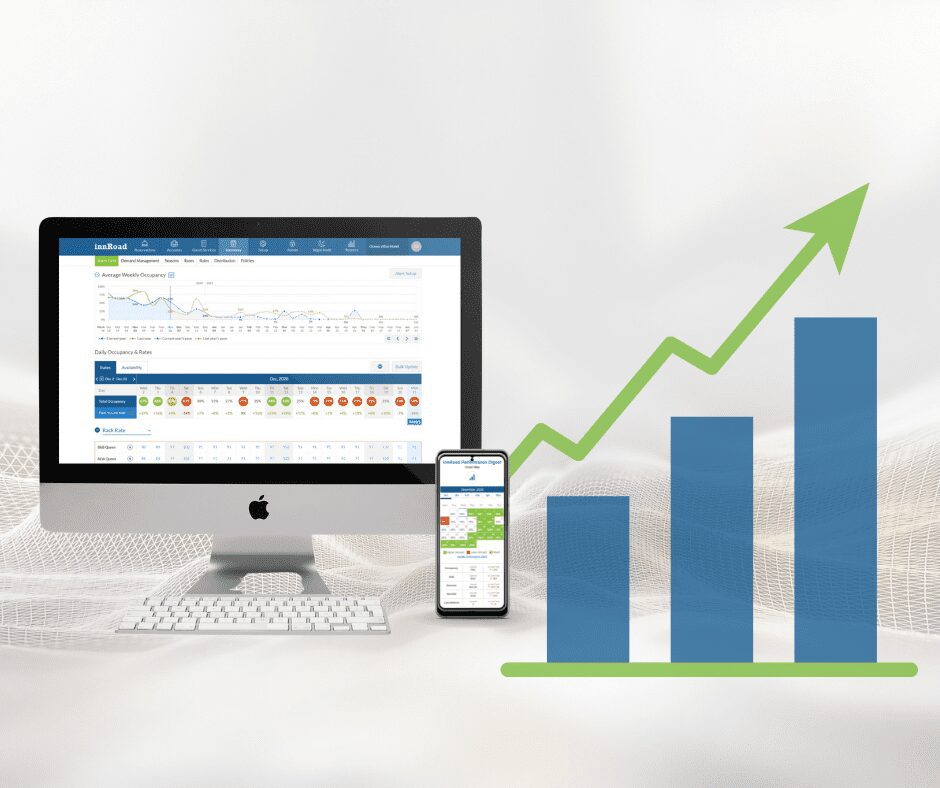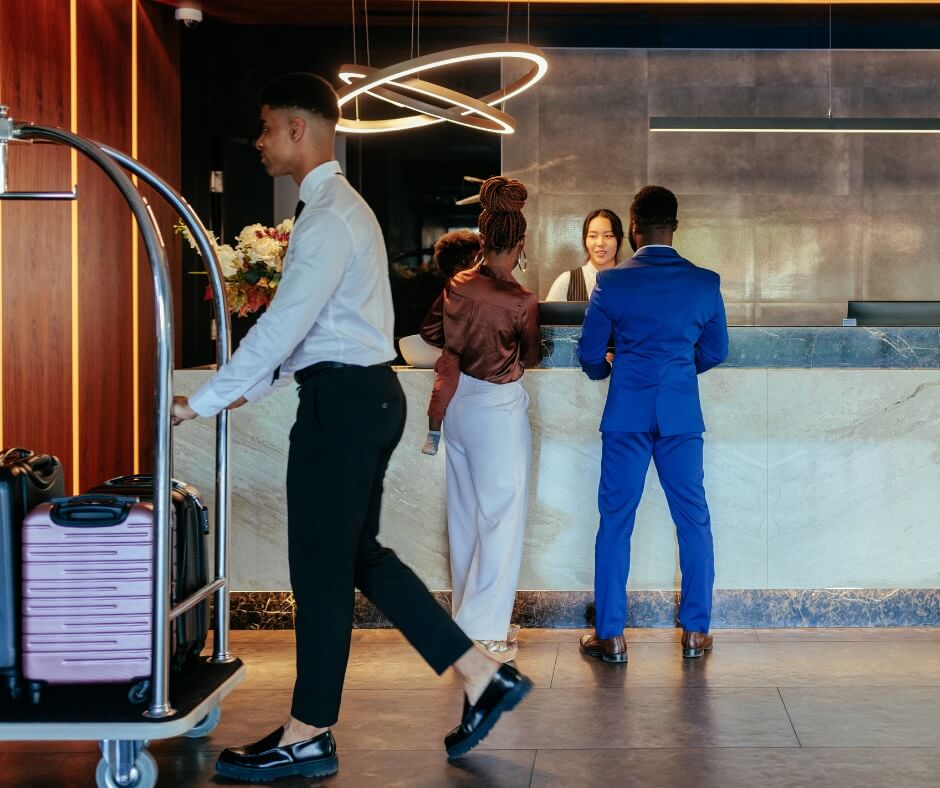There are many metrics by which to measure the success of a small hotel: guest reviews, revenue, and of course, occupancy rate (just to name a few).
Occupancy rate is one of the simplest—and most important—success metrics for small hotel owners and managers. It may technically be simple to calculate (especially if you have an all-in-one property management system to do it for you), but understanding your occupancy rate may not feel so straightforward when you’re busy managing the day-to-day operations of your small hotel.
The truth is, there is no such thing as one universal “good” occupancy rate. Ultimately, what is considered a “good” occupancy rate will depend on your unique property—your location, your target audience, local competition, and market demand will all impact your occupancy rate. And just to make things even more complicated, occupancy rate can vary widely day-to-day, week-to-week, month-to-month, and year-to-year.
Monitoring your occupancy rate across all of these timelines may seem like overkill, but it pays to keep a close eye on your occupancy throughout the year so you can adjust to your pricing and promotions to keep your occupancy rate—and your earnings—as high as possible.
In this post, we’ll take a closer look at everything you need to know about your occupancy rate, including:
- What is occupancy rate?
- How to calculate occupancy rate (including a simple occupancy rate formula)
- Factors that impact your occupancy rate
- How to improve your occupancy rate
Let’s get started.
1. What Is Occupancy Rate?
Occupancy rate is the percentage of occupied rooms in your property at any given time. It can be calculated over a variety of time periods to give you a measure of your property’s success and your progress towards your goals, including:
- Daily: Review your property’s day-to-day performance and highlight patterns like weekday vs. weekend occupancy or the impact of special events in your area.
- Weekly: Get insight into broader occupancy trends, especially around local events like festivals.
- Monthly: Identify seasonal patterns and compare your performance and progress year-over-year.
- Yearly: Get a birds-eye view of your annual performance and use this information to set goals, plan your budget, forecast future trends, and create new promotional strategies.
You can also calculate occupancy around flexible time periods like special events or major promotions so you can adjust your pricing and marketing strategies for similar events or initiatives in the future.
Knowing your occupancy rates over these different time periods is key to understanding your property’s occupancy trends. With this information, you can create new strategies to boost occupancy when you know you need it. For example, if your weekend occupancy rate is close to 100% but your occupancy rate through the week drops to 50% or below, you may want to adjust your mid-week pricing or create packages that appeal to weekday travelers, such as corporate rates for business travelers or value-added packages for recreational travelers.
Calculating daily, weekly, monthly, and yearly occupancy rates manually can be time consuming. An all-in-one property management system (PMS) with revenue management tools can drastically simplify the process—and eliminate the need to deal with any annoying math equations and occupancy rate formulas. With an all-in-one PMS, you can quickly access key occupancy rate information over different time periods so you can easily monitor your progress over time and even compare your property’s performance to the previous year.
INNROAD TIP: Occupancy rate is an important KPI, but it should always be considered in conjunction with other metrics like revenue or average daily rate (ADR). A high occupancy rate doesn’t necessarily equate to high earnings, especially if your rates are too low to offset the higher operating costs of running a property at maximum capacity.
ADR can help fill in this data gap. Multiplying your ADR by your occupancy rate will show you your revenue per available room (RevPAR), which tells you how much revenue each occupied room brings in—a key metric for small hotels. With an all-in-one small hotel PMS with revenue management and reporting features, you can easily review this information and use it to make decisions for your hotel.
2. How To Calculate Occupancy Rate
If you need to manually calculate your daily occupancy rate, start with this simple occupancy rate formula:
Total number of rooms occupied / Total number of rooms available x 100 = Occupancy percentage
For example, if you have 15 rooms and 12 are occupied:
12 / 15 x 100 = 80%
If you want to calculate weekly, monthly, or yearly occupancy rate, use these occupancy rate formulas:
3. Factors That Impact Your Occupancy Rate
Understanding the major factors that can impact your occupancy rate will help you determine what constitutes a “good” occupancy rate for your small hotel. Here are three key factors to consider:
- Location: Hotels in busy urban areas, such as city centers, business hubs, or near popular attractions will have a higher occupancy rate than further-flung establishments. However, small hotels in especially picturesque or unique settings may experience equally high occupancy rates even if they are in a secluded location.
- Seasonality: The travel industry is highly seasonal, but your busy season can vary widely depending on your unique circumstances. For example, beach resorts will have their busy season in the summer with a quiet winter, while ski resorts will experience the opposite. Hotels in the city, on the other hand, may not experience quite as much seasonal fluctuation, but they may see a surge in bookings around the holiday season or other major events.
- Pricing: If your rates are too high, your occupancy rate may drop. On the flip side, if your rates are too low, your occupancy may jump and you may want to consider increasing your rates.
Revenue management tools can help you optimize your pricing strategy based on occupancy. For example, innRoad’s all-in-one PMS will send you Surge Alerts whenever bookings increase for a particular time period, prompting you to increase your rates. You can even configure your PMS to automatically adjust your rates according to booking demand so you can rest easy knowing that you aren’t underpricing your rooms and that your property is making the most of increased demand.
4. How To Improve Your Occupancy Rate
If you’ve calculated your occupancy rate (or consulted your PMS) and are ready to take steps to improve it, here are a few tried and true ideas to help give you a boost:
- Length of stay requirements: By reducing turnover, minimum length of stay requirements can help you increase occupancy during slower periods and ensure you make the most of times when demand is higher.
- Packages and promotions: Small hotels are in the best position to offer personalized, memorable experiences, whether that means complimentary champagne in guest rooms upon arrival, spa visits, fine dining, or special experiences like campfires, stargazing, picnic baskets, wine tastings, or live music. The kinds of packages and promos you can offer are limited only by your creativity. Check out our post on how to boost hotel occupancy for more ideas.
- Dynamic pricing: Dynamic pricing (also referred to as time-based pricing) utilizes flexible pricing for rooms and services based on market demand. With an all-in-one property management system like innRoad, you can review occupancy and revenue reports to easily identify opportunities to adjust your pricing strategy. innRoad can even send you Surge Alerts when bookings increase so you know it’s time to review your rates. And with our Yield Management tool, you can automate the process so your room rates are adjusted automatically in response to booking behavior.
- Loyalty programs: It’s easier to attract guests who have already stayed at your hotel—especially if they had a memorable experience during their previous stay. Special discounts, reward points, and limited offers are also effective methods to attract repeat guests.
- Improve your booking experience: Making it easy for guests to find your property and book their stay online is a key tactic for increasing hotel occupancy. With an integrated booking engine, your guests can book their stay right on your website knowing they’re getting the best rate. innRoad’s online booking engine, for example, integrates seamlessly with your existing website and makes it easy for guests to add upsells or other add-ons during booking, such as early check-in, bottles of champagne on arrival, and other on-brand touches customized to your property. If you also list your hotel on OTAs, hotel channel manager software will make it easy for you to manage your profiles across all the major OTAs so guests can easily find your hotel wherever they prefer to book.
- Adding amenities: By listening carefully to the needs of your guests, you can find ways to increase demand and boost your hotel occupancy rate. If you notice that guests are asking for specific amenities, either at your front desk or in their post-stay reviews, consider adding them to your offerings.
- Leveraging local events: Special events happening in your area will create demand for travel and attract visitors—and they’ll need somewhere to stay. When you know these events are coming, you can advertise directly to your target market and develop special promos for these audiences. You could also look into partnering with local event organizers to create special promotions, such as discounts on room rates for ticket holders.
- Partnering with local businesses: Developing strong relationships with other businesses and organizations in your community can help you boost hotel occupancy and generate more revenue. There’s no limit to the ways small hotels can work with other local businesses to increase occupancy. Read more of our ideas for boosting hotel occupancy by partnering with local businesses.
- Attracting group bookings: Weddings, reunions, and corporate outings are just some of the events that could help attract large groups (and multi-room bookings) to your hotel.
- Remarketing: Remarketing allows you to advertise directly to potential guests who have already demonstrated an interest in your property, whether that means they’ve visited your site, stayed with you before, joined your email list, or interacted with you on social media. This kind of advertising is a key tactic for remaining top-of-mind during off-seasons when people might be planning travel or are looking for a quick getaway/change of pace, or even a staycation. They can also help you target repeat visitors and begin building brand loyalty.
Checking Out
Occupancy rate is just one of many metrics by which to measure the success of a small hotel. Monitoring your daily, weekly, monthly, and yearly occupancy rate across can help you understand booking trends at your independent hotel so you can create effective strategies to boost your occupancy rate during lower periods.
With an all-in-one PMS like innRoad, you can quickly access occupancy rate information and compare it year over year to monitor your progress towards your goals. You can also create Surge Alerts that notify you when bookings increase so you can adjust your rates, and even configure automated rate adjustments according to booking activity to make the most of your high (or low) occupancy.
Discover innRoad's Small Hotel PMS
Keep Reading

What Is A Small Hotel Property Management System?

Types of Hotel PMS for Small Hotels

How Does Property Management System Software for Small Hotels Work?

